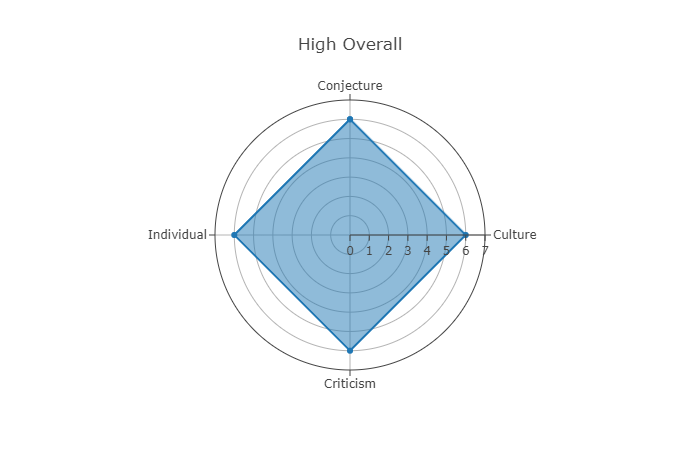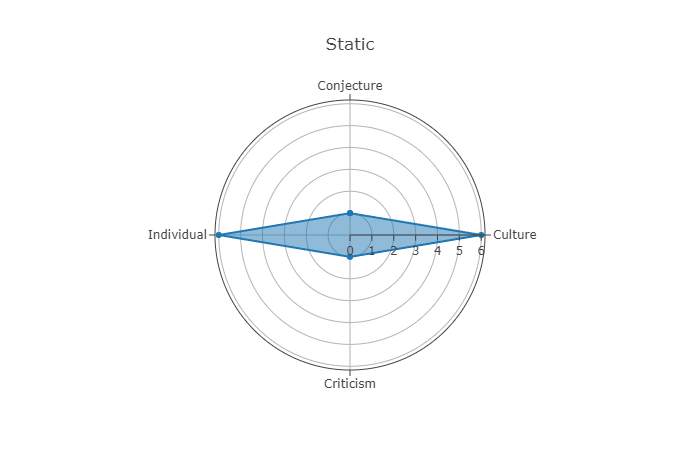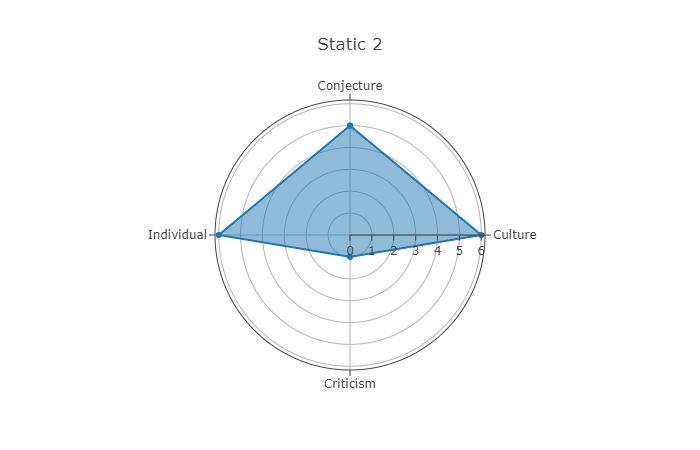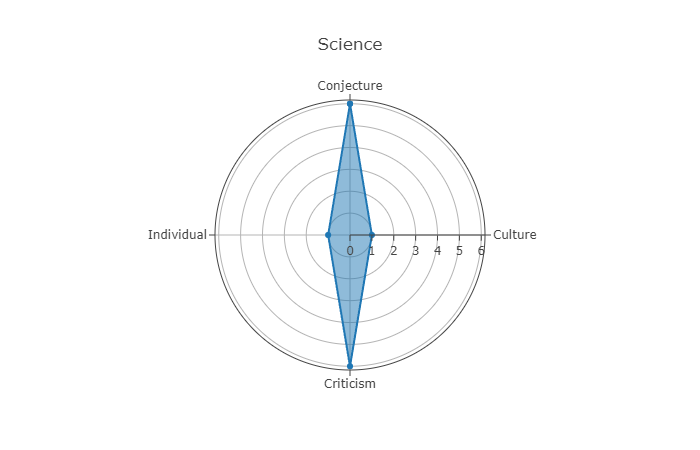71. Understanding Ourselves, The World, & Our Place In It
Today, I began thinking about how to connect epistemology (how knowledge grows) with anthropology (the study of culture and behavior). As I mentioned in We Are Born Learning Machines, Seymour Papert mentioned this idea of educators being anthropologists and children being epistemologists. I found this an insightful way to look at a human being and their relationship with others.
So how could we connect how knowledge grows and the study of culture and behavior? We know that knowledge grows through conjecture and criticism and when it comes to people you can think of the individual and the culture as a whole. Using a radar chart I demonstrate the ideal state for these attributes. These individuals excel in forming new ideas and theories, critically evaluating existing ideas, and balancing their focus on both cultural and individual aspects. They grow in understanding themselves, the world, and their place or purpose in it.

The ideal state is straight forward and easy to understand but can this form of representation account for less than ideal states and how well could it do this? Consider a person that generally ignores themselves and the world but loves creating ideas. All that matters is the next idea. That person could be represented in the following chart. Notice that this person never grows in knowledge.

Now let's consider static and stagnant people. Below are two charts representing them. To be static means to restrict the growth of knowledge. Humans lived like this for a long time until the Enlightenment.

Even though new ideas were being formed until we had an error correction mechanism our society was static. The missing element was criticism and so several other charts could be created to represent a static society as long as criticism was low.

Fields such as physics and mathematics, which care about abstractions and phenomena, and not so much about people and society could look like the following chart. Here knowledge grows but not about the individual or culture.

I wonder how much this representation can capture but for now I will leave you to explore it further. In the spirit of ideal state graph I encourage you to form and critique ideas about yourself and culture. The graphs were created with this.
